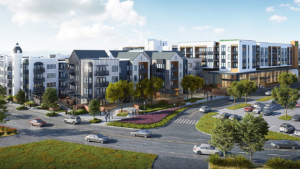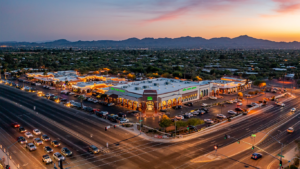 Market report supplied by Colliers International
Market report supplied by Colliers International
THE BROADER VIEW
The Greater Phoenix multifamily market continued to ride a wave of momentum to start 2015. Robust renter demand for units fueled another vacancy improvement, rents surged and sales prices posted additional gains. Healthy employment growth is the driving force behind renter demand, and the new units that are being delivered to the market are being leased quickly. The supply side remains the primary uncertainty going forward, particularly as permitting for new units slowed in late-2014 and again in the first few months of this year.
CURRENT CONDITIONS
After ending 2014 at a 17-year low, the Greater Phoenix multifamily vacancy rate continued to improve in the first three months of 2015. The rate fell 50 basis points in the first quarter to 5.7 percent, and over the past 12 months, vacancy has dipped 80 basis points. The ongoing vacancy tightening has been dynamic; as recently as the end of 2010, metrowide vacancy was over 10 percent, and the rate peaked at more than 13 percent in 2009.
While the market rate was over 10 percent a few years ago, currently, only one submarket in all of Greater Phoenix currently has a vacancy rate in the double digits. A dozen submarkets in the Valley feature vacancy rates of 5 percent or lower, with some of the tightest vacancies in the Ahwatukee Foothills, Chandler and Gilbert submarkets. Year-over-year vacancy declines have been recorded in more than 70 percent of the submarkets in the metro area, and in the areas where the rate is improving, the average decline is approximately 150 basis points.
After renters moved into a net of more than 5,800 units in 2014, another surge in demand was recorded in the first quarter. Net absorption hit a five-year high in the first quarter, totaling more than 2,800 units, up nearly 15 percent from the first quarter 2014. While absorption was strongest in Scottsdale and Chandler/Gilbert, it was positive in nearly every submarket in the Valley during the first quarter, with healthy performance in the Glendale, Union Hills/Cave Creek and Ahwatukee Foothills submarkets.
Persistent renter demand for units and tightening vacancy are fueling robust rent growth. Asking rents surged 2.2 percent in the first quarter—the strongest single quarterly increase on record—and have jumped 5.4 percent over the past 12 months.This comes following a 1.5 percent rent gain to close 2014, which at the time was the largest rent spike since 2006. At $837 per month, current asking rents are 9 percent above the post-recession low, and average increases in the 4.0 percent to 6.5 percent range are forecast over the next few years.
Sales velocity in the first three months of 2015 lagged activity levels from the preceding quarter by approximately 20 percent, but declines in the first quarter are common. When compared to other starts to the year, however, activity was quite robust, with more properties changing hands to start 2015 than in any first quarter since 2007. When compared to the same period one year ago, sales activity thus far in 2015 has more than doubled.
Strengthening property performance and favorable market sentiment are pushing prices higher. The median price per unit rose approximately 10 percent in 2014 and continued to gain momentum to start this year. The median price in the first quarter was $73,100 per unit, the highest median price since 2008. Part of the recent rise is explained by activity at the high-end of the market.Sales of properties for more than $100,000 per unit accounted for 38 percent of all transaction volume in the first quarter, up from 30 percent of all sales in 2014. These higher-priced properties are typically newer construction, averaging 10 years old at the time of sale. With developers increasing deliveries in recent years, and investment demand healthy, there could be additional volume among newer properties in the years ahead.






